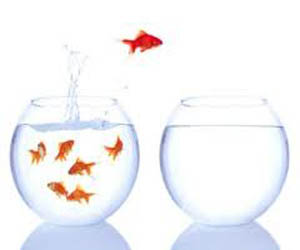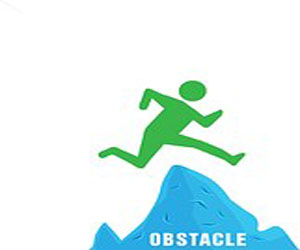


Finding Balance And Resilience

Life is a continuous series of ups and downs, of highs and lows, much like the ebb and flow of the tides. Just as the tides rise and fall with the gravitational pull of the moon, our lives are influenced by a variety of forces that bring change, growth, and transformation. Understanding and embracing the ebb and flow of life is essential for finding balance and resilience.
The concept of the ebb and flow is deeply rooted in the natural world, particularly in the rhythmic patterns of the ocean. The ebb refers to the tide going out, and the flow represents the tide coming in. These natural cycles symbolize the constant change and movement in the world around us.
In our lives, the ebb and flow can be observed in various aspects, including personal experiences, relationships, careers, and even our emotional states. During the ebb, we may face challenges, setbacks, or periods of decline. These moments can be difficult, but they also offer valuable opportunities for learning, self-reflection, and growth.
The flow, on the other hand, represents moments of growth, success, and abundance. These are the times when we experience achievements, personal fulfillment, and joy. Just as the ebb teaches us resilience, the flow reminds us to appreciate and savor life's positive moments.
Resilience is a vital quality developed through the ebb and flow of life. It is the ability to bounce back from adversity and adapt to change. When we face setbacks or challenges, we have the opportunity to build our resilience, which enables us to navigate future difficulties with greater strength and determination.
Acceptance is another key aspect of embracing the ebb and flow. Learning to accept that change is a natural part of life can reduce stress and anxiety when facing challenging moments. Instead of resisting change, we can adapt, evolve, and find new solutions.
The ebb and flow of life can also teach us the importance of balance. Just as the ocean's tides require balance to maintain their rhythm, our lives benefit from equilibrium. Balancing our work and personal lives, our ambitions and self-care, and our highs and lows contributes to overall well-being.
A positive mindset plays a significant role in embracing the ebb and flow. Maintaining a hopeful and optimistic outlook can help us navigate challenging times and fully appreciate moments of abundance and joy. This mindset encourages us to keep moving forward, even when the tide is out.
The ebb and flow of life are natural and inevitable processes that shape our existence. By understanding and embracing these cycles, we can learn to find balance, build resilience, and maintain a positive outlook. The ebb teaches us valuable life lessons and offers opportunities for growth, while the flow reminds us to savor the moments of joy and abundance. By accepting change and striving for balance, we can navigate life's tides with grace and resilience, ultimately leading to a more fulfilling and well-rounded existence.
Breaking Free From The Chains Of Insecurity
 Understanding Crippling Self-Doubt
Understanding Crippling Self-Doubt
Crippling self-doubt goes beyond the occasional self-questioning or moments of uncertainty that most people experience. It is a persistent and pervasive sense of inadequacy that can lead to a fear of failure, constant anxiety, and a belief that one is inherently unworthy or incapable of success. Those afflicted with crippling self-doubt often struggle to internalize their accomplishments and talents, attributing their successes to external factors or mere luck.
Causes Of Crippling Self-Doubt
Crippling self-doubt can have various origins, and it may be triggered or exacerbated by a range of factors:
Past Experiences: Traumatic experiences or past failures can leave lasting scars and foster self-doubt.
Comparison: Constantly comparing oneself to others and feeling like you fall short can lead to crippling self-doubt.
Perfectionism: Striving for unattainable perfection and fearing any hint of imperfection can fuel self-doubt.
High Expectations: External pressure or high expectations from others can amplify self-doubt.
Impostor Syndrome: The feeling of being a fraud, despite success, can contribute to crippling self-doubt.
 Lack Of Prioritization: Many procrastinators struggle with prioritizing tasks effectively. They often engage in low-priority activities, leaving important tasks undone. Combat this habit by using the Eisenhower Matrix, which categorizes tasks into four quadrants: urgent and important, important but not urgent, urgent but not important, and neither urgent nor important. Focus on the important and urgent tasks first.
Lack Of Prioritization: Many procrastinators struggle with prioritizing tasks effectively. They often engage in low-priority activities, leaving important tasks undone. Combat this habit by using the Eisenhower Matrix, which categorizes tasks into four quadrants: urgent and important, important but not urgent, urgent but not important, and neither urgent nor important. Focus on the important and urgent tasks first.
Perfectionism: The quest for perfection often leads to procrastination. Perfectionists may delay tasks because they fear not meeting their high standards. To break this habit, shift your perspective and understand that perfection is an ideal that is rarely attainable. Aim for excellence instead of perfection, and you'll find it easier to start and complete tasks.
Distraction Prone: The digital age has brought a plethora of distractions in the form of social media, emails, and notifications. It's easy to fall into the habit of constantly checking your devices. To combat this, establish focused work periods where you minimize or eliminate distractions. Tools like website blockers can help you stay on track.
Ignoring Deadlines: Ignoring deadlines is another procrastination habit that can lead to stress and missed opportunities. When you consistently underestimate the time required to complete a task, you end up rushing at the last minute. To break this habit, use time management techniques like time blocking and create a buffer for unexpected delays.
 The Nature Of Quiet Retreat: Introverts' quiet retreats are not about isolation or avoidance of others. Rather, they represent a conscious choice to withdraw from the external world and immerse themselves in solitude. These moments serve as a source of mental and emotional rejuvenation.
The Nature Of Quiet Retreat: Introverts' quiet retreats are not about isolation or avoidance of others. Rather, they represent a conscious choice to withdraw from the external world and immerse themselves in solitude. These moments serve as a source of mental and emotional rejuvenation.
A Sanctuary For Recharging: Introverts draw energy from these retreats. Unlike extroverts who recharge in the company of others, introverts find their strength in solitude. These retreats offer a sanctuary where they can replenish their inner resources and regain a sense of balance.
Deep Reflection And Self-Discovery: During quiet retreats, introverts engage in deep introspection. They reflect on their thoughts, emotions, and experiences, allowing them to gain a profound understanding of themselves. This self-discovery is a cornerstone of personal growth, as it empowers introverts to make informed decisions and set meaningful goals.
Creative Oasis: Solitude and quiet retreats provide fertile ground for creativity and innovation. Free from the distractions of constant social interactions, introverts can let their imaginations roam freely. Many artistic and intellectual breakthroughs have occurred during these moments of quiet contemplation.
Emotional Well-Being: One of the most significant benefits of quiet retreats is their impact on emotional well-being. Introverts use these moments to regulate their emotions, process stress, and find solace.






Unlocking Your Full Potential
 The Importance Of Self-Belief
The Importance Of Self-Belief
Empowerment: Self-belief empowers individuals to pursue their goals and dreams. It instills a sense of agency and control over one's life, enabling the pursuit of aspirations and ambitions.
Resilience: People with strong self-belief tend to be more resilient in the face of adversity. They view setbacks as temporary and surmountable, using them as stepping stones for growth.
Positive Self-Image: Self-belief contributes to a positive self-image. When individuals believe in themselves, they are more likely to take care of their physical and mental well-being, which, in turn, reinforces their self-esteem.
Risk-Taking: Self-belief encourages calculated risk-taking. It allows individuals to step out of their comfort zones, explore new opportunities, and take on challenges that may have seemed daunting otherwise.
Building Self-Belief
Positive Self-Talk: The way you talk to yourself matters. Replace self-criticism with self-encouragement. Acknowledge your accomplishments and focus on your strengths.
Set Realistic Goals: Start with achievable goals and gradually work your way up. Each successful achievement will boost your self-belief.
Overcome Fear Of Failure: Understand that failure is a part of life. Rather than fearing it, see it as a valuable learning experience. Embrace failures as opportunities for growth.
Learn From Experience: Reflect on your past accomplishments and challenges. Recognize how your self-belief has played a role in your successes.
Surround Yourself With Positivity: Spend time with people who support and uplift you. Negative influences can erode self-belief, so choose your company wisely.
Continuous Learning: Invest in your personal growth and skills. Expanding your knowledge and abilities can boost your confidence.
The Dangers Of Low Self-Belief
Low self-belief can have significant negative consequences. It can lead to self-doubt, anxiety, and a fear of taking risks. This, in turn, can result in missed opportunities and unfulfilled potential.
The Key Factors To Achieving Your Goals
 2. Resilience And Perseverance
2. Resilience And Perseverance
Resilience is the ability to bounce back from setbacks and continue pursuing your goals. Success often involves facing challenges, failures, and adversity. Developing resilience and the willingness to persevere through difficult times is essential. Remember that failure is a stepping stone to success.
3. Self-Discipline
Self-discipline is the ability to stay committed to your goals and take consistent action, even when motivation wanes. It involves making sacrifices and maintaining a strong work ethic. Cultivating self-discipline helps you overcome procrastination and stay on track.
4. Continuous Learning
Successful individuals are lifelong learners. They embrace opportunities for growth and improvement. Keep acquiring new knowledge and skills related to your field and personal development. Continuous learning enables you to adapt to changing circumstances and remain relevant in your endeavors.
5. Resilient Mindset
A resilient mindset, often described as a growth mindset, involves viewing challenges as opportunities for growth and learning. It's the belief that abilities and intelligence can be developed through effort and experience. A resilient mindset enables you to embrace setbacks and learn from them, making you more adaptable and optimistic.